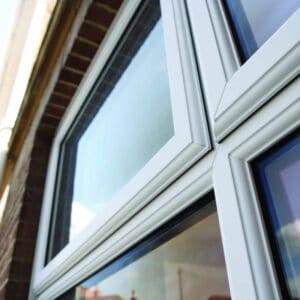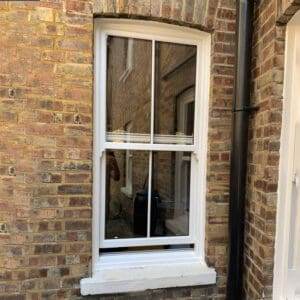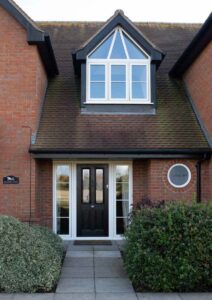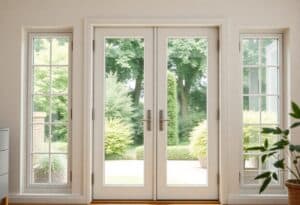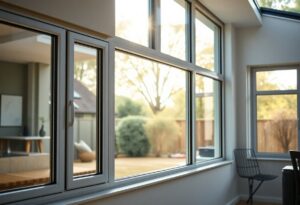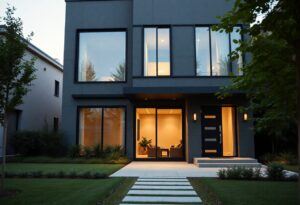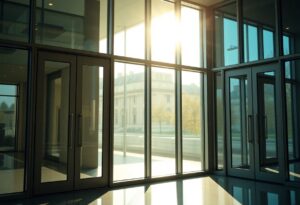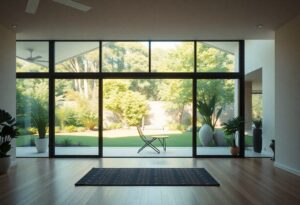With the ever-evolving landscape of window technology, it’s vital for you to understand the benefits of material innovation in R2 window systems. These systems incorporate advanced composite profiles and reinforcements, which enhance durability, energy efficiency, and aesthetic appeal. This blog post aims to provide you with a thorough examination of these materials, highlighting their exceptional performance and impact on modern construction, allowing you to make informed decisions for your projects.
Overview of R2 Window Systems
A comprehensive understanding of R2 Window Systems reveals their innovative design and significant advantages. Utilising modern composite window and door profiles, these systems offer enhanced performance and aesthetics for your building projects.
Definition and Purpose
One of the primary aims of R2 Window Systems is to provide a combination of strength, durability, and energy efficiency. They are designed to effectively enhance the thermal and acoustic performance of buildings, while also offering aesthetic appeal.
Market Applications
For those involved in construction and design, R2 Window Systems find applications across various sectors. These systems are ideal for residential, commercial, and industrial buildings, showcasing versatility and performance.
With their robust structure and lightweight nature, R2 Window Systems are increasingly favoured in the industry. They not only streamline installation but also meet stringent energy efficiency standards. Moreover, their resistance to corrosion and weathering makes them a safe choice for your projects, ensuring long-term performance. Integrating these systems allows you to enhance the aesthetic and functional aspects of your buildings, ultimately leading to increased property value.
Material Composition of Composite Profiles
You will find that the material composition of composite profiles is vital for enhancing the performance and durability of R2 Window Systems. Recent studies, such as Characterizing friction for fiber reinforced composites, indicate that understanding these materials can lead to better design choices that maximise functionality.
Types of Materials Used
Along with traditional materials, composite profiles often incorporate a range of advanced resources. The most common materials are:
| Fibres | Glass, Carbon, Natural |
| Matrices | Epoxy, Polyester, Polypropylene |
| Fillers | Mineral, Organic, Synthetic |
| Additives | UV stabilisers, Colourants |
| Reinforcements | Textile, Roving, Chopped strands |
Recognising these varied components is important for optimising the performance of composite systems.
Benefits of Composite Materials
One significant advantage of composite materials is their exceptional strength-to-weight ratio, which enhances the overall efficiency of your window systems. This characteristic not only allows for larger, more elegant designs but also contributes to improved energy efficiency.
In addition to the above benefits, composite materials provide corrosion resistance and minimal maintenance requirements, ensuring longevity in harsh environments. Furthermore, their thermal insulation properties significantly reduce energy costs, making your windows more eco-friendly. Ultimately, these advantages underscore the importance of using composite materials in modern construction and design.
Reinforcements in R2 Window Systems
There’s a significant emphasis on reinforcements within R2 window systems, as they play a vital role in enhancing the overall strength and stability of the structure. These reinforcements ensure that your windows can withstand various external forces, ensuring long-term functionality and safety.
Types of Reinforcements
Before delving into details, it’s important to recognise the various types of reinforcements used in R2 window systems:
| Steel Reinforcements | Provide exceptional strength and rigidity. |
| Aluminium Reinforcements | Lightweight and resistant to corrosion. |
| Composite Reinforcements | Combines materials for optimal performance. |
| Fibreglass Reinforcements | Offers high tensile strength and durability. |
| Polymer Reinforcements | Enhances thermal performance and insulation. |
Knowing the types of reinforcements can help you make informed choices for your window installations, ensuring longevity and efficiency.
Impact on Performance and Durability
Reinforcements significantly influence the performance and durability of R2 window systems. By integrating appropriate materials, your windows achieve enhanced thermal efficiency, improved weather resistance, and increased security.
Systems with well-planned reinforcements can withstand high winds and weather fluctuations while providing a robust aesthetic appeal. A window’s capability to resist impacts and maintain integrity is largely contingent on the quality of reinforcements incorporated into its design. You will find that these properties foster a long-term investment, ensuring that your property not only looks good but also stands the test of time.

Manufacturing Processes
Your understanding of the manufacturing processes employed in the R2 window systems will enhance your appreciation for their innovative composite profiles and reinforcements. The integration of advanced techniques plays a vital role in ensuring that these systems meet both performance and aesthetic expectations, ultimately contributing to their durability and efficiency in various applications.
Techniques for Composite Fabrication
Among the various techniques for composite fabrication, methods such as pultrusion, vacuum bagging, and resin transfer moulding stand out for their efficiency and precision. Each technique has distinct advantages that cater to specific design requirements, allowing you to optimise material properties while minimising waste in the production process.
Quality Assurance Measures
With a focus on quality assurance measures, the R2 window systems undergo rigorous testing to ensure they meet industry standards. You will find that these measures include comprehensive inspections, mechanical testing, and environmental exposure assessments, safeguarding against potential failures and ensuring reliability.
Techniques implemented for quality assurance include non-destructive testing and performance verification protocols, which are vital in identifying any defects or weaknesses within the composite materials. By employing strict inspection criteria, these measures ensure that only products meeting the highest standards of safety and performance are approved for use. Additionally, continuous monitoring throughout the manufacturing process helps in addressing any inconsistencies immediately, thereby protecting you from possible long-term issues in installation and performance.

Sustainability in Material Innovation
For a more sustainable future, material innovation plays a vital role in reducing environmental impact while enhancing performance. R2 window systems, particularly through their composite profiles and reinforcements, showcase how marrying durability with eco-conscious materials can lead to significant reductions in carbon footprints. By focusing on sustainable materials, you can contribute to creating energy-efficient buildings that help in conserving our planet’s resources.
Eco-Friendly Practices
Beside the selection of sustainable materials, adopting eco-friendly practices in production processes is important. You should consider manufacturers that implement green initiatives, such as reducing waste, recycling materials, and using renewable energy sources. These practices not only enhance the product’s sustainability but also resonate with environmentally conscious consumers seeking responsible choices.
Lifecycle Assessment of R2 Systems
About assessing the lifecycle of R2 systems, it is vital to understand the environmental impacts from production through to disposal. Conducting a lifecycle assessment enables you to identify critical areas where improvements can be made, ensuring that every stage is optimised for sustainability.
Sustainability within the lifecycle assessment of R2 systems reveals key insights into the environmental impacts of materials over time. In this process, you analyse aspects such as resource extraction, manufacturing, usage, and end-of-life disposal. By understanding these factors, you can choose materials that maintain durability while minimising waste and pollution. Moreover, lifecycle assessments highlight the importance of materials that can be easily recycled or repurposed, amplifying your contribution to a circular economy and reducing landfill contributions.
Comparative Analysis with Traditional Window Systems
After examining the R2 Window Systems, it becomes clear how they stack up against traditional window options. The key differences can be illustrated in the following table:
Comparison Table
| Aspect | R2 Window Systems |
| Energy Efficiency | High thermal performance |
| Weight | Lightweight composite materials |
| Maintenance | Low maintenance requirements |
| Durability | Enhanced resistance to weathering |
Performance Metrics
An analysis of performance metrics highlights the R2 Window Systems’ superior attributes. Your experience with these systems will likely reveal significant improvements in energy efficiency, thanks to advanced insulation properties. You will find that traditional options often fall short in areas like thermal performance and durability, making R2 a compelling choice.
Cost-Benefit Analysis
Any cost-benefit analysis you conduct will showcase the economic advantages of R2 Window Systems over traditional alternatives. While the initial investment may be higher, the long-term savings and enhanced performance factors create a strong case for your consideration.
Traditional window systems generally come with lower upfront costs, yet they entail higher ongoing expenses due to frequent maintenance and energy loss. By opting for R2 Window Systems, you will appreciate significant savings in your utility bills alongside less frequent maintenance demands, thus streamlining your long-term budget. When considering both performance and economics, R2 offers a forward-thinking solution that prioritises both your financial health and environmental considerations.
Conclusion
Ultimately, your understanding of ‘Material Innovation – Examining the Composite Profiles and Reinforcements of R2 Window Systems’ empowers you to appreciate the intricate advancements in window technology. By recognising the significance of composite profiles and reinforcements, you position yourself to make informed decisions that enhance both performance and sustainability in your projects. The exploration of these materials not only enhances durability but also contributes to energy efficiency, allowing you to achieve a balance between aesthetic appeal and functional excellence.
FAQ
Q: What are composite profiles in the context of R2 window systems?
A: Composite profiles in R2 window systems refer to the materials and construction methods used to create the frames and structures of the windows. These profiles typically combine different materials, such as plastics, metals, and fibreglass, to enhance performance, durability, and aesthetics. The innovation in composites allows for better thermal insulation, reduced maintenance, and increased strength without adding excessive weight.
Q: How do reinforcements impact the performance of R2 window systems?
A: Reinforcements play a significant role in improving the structural integrity and longevity of R2 window systems. By integrating materials like steel or aluminium within the composite profiles, manufacturers can enhance resistance to impact, wind loads, and thermal expansion. This ensures that the windows maintain their shape, operate effectively, and protect against environmental stresses over time.
Q: What are the environmental benefits of using material innovations in window systems?
A: The use of innovative materials in R2 window systems can lead to several environmental benefits. Many composite materials are designed to improve energy efficiency, which can reduce heating and cooling costs in buildings. Additionally, advances in recycling and sourcing of materials contribute to sustainable practices, minimising waste and environmental impact. Moreover, these innovations often lead to the production of windows that require less maintenance over time, reducing overall resource consumption.
Q: How do R2 window systems compare to traditional window systems?
A: R2 window systems often outperform traditional window systems in several key areas. The composite materials used in R2 systems typically provide better thermal insulation, resulting in energy savings. They are also designed to be lighter and more resistant to weathering, offering improved longevity and reduced maintenance needs. Furthermore, many of the innovations in materials allow for more design flexibility, enabling architects and builders to create aesthetically pleasing structures that meet modern standards.
Q: Are R2 window systems suitable for all climates?
A: Yes, R2 window systems are designed to be versatile and suitable for a range of climates. The advanced composite materials and reinforcements can be engineered to handle extreme weather conditions, including high winds, heavy rains, and temperature fluctuations. This adaptability makes R2 systems a popular choice for residential and commercial buildings in diverse geographical locations, ensuring performance and energy efficiency regardless of the external environment.

